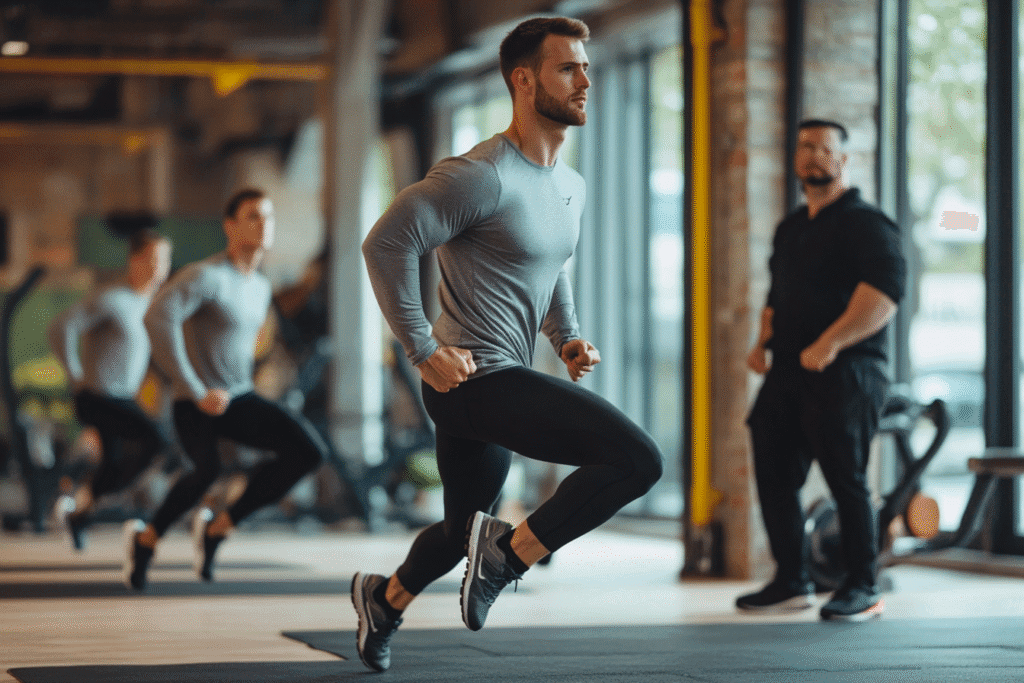
When shopping for activewear or stretchy clothing, you’ve likely encountered labels boasting ‘nylon,’ ‘spandex,’ or ‘Lycra’—but what do these terms really mean? While all three are synthetic fabrics widely used in fashion and sportswear, they serve vastly different purposes. Nylon prioritizes durability, while spandex and Lycra (often the same material) excel in elasticity. Understanding their differences can help you choose the right fabric for comfort, performance, and longevity.
Nylon is a durable, lightweight polyamide fiber used for strength; spandex (also called Lycra) is a polyurethane-based elastic fiber designed for stretch. The key difference lies in their properties: nylon resists abrasion but has minimal stretch, whereas spandex/Lycra can expand up to 8 times its length. They’re often blended—for example, leggings may combine nylon for structure and spandex for flexibility.
To dive deeper, let’s break down each fabric’s composition, uses, and how they compare side by side—starting with nylon’s role in synthetic textiles.
Introduction to Synthetic Fabrics
Synthetic fabrics have revolutionized the textile industry by offering durability, flexibility, and functionality that natural fibers often can’t match. From everyday clothing to high-performance athletic wear, materials like nylon, polyester, spandex, and Lycra dominate modern fashion due to their unique properties. These man-made fibers are engineered for specific purposes—nylon for strength, spandex for stretch, and polyester for moisture-wicking—making them essential in everything from swimwear to medical garments.
Yet, despite their widespread use, many people still confuse nylon, spandex, and Lycra. Why?
- Branding vs. generic terms: “Lycra” is a brand name for spandex (like “Kleenex” for tissues), leading to mix-ups.
- Frequent blending: Many fabrics combine these materials (e.g., leggings with nylon-spandex blends), blurring distinctions.
- Similar applications: All three are common in stretchy, form-fitting clothing, making them seem interchangeable.
Understanding their differences is key to choosing the right fabric—whether you need breathable workout gear, long-lasting outerwear, or ultra-stretchy undergarments. Let’s break them down.
Nylon: The Versatile Synthetic Fiber
Synthetic fabrics have transformed modern textiles, and nylon stands out as one of the most adaptable and widely used materials. Known for its strength, elasticity, and resistance to wear, nylon has become a staple in everything from everyday clothing to high-performance gear. But what exactly makes nylon so special, and where is it most commonly used?
What Is Nylon?
Nylon is a synthetic polymer (specifically, a polyamide) first developed in the 1930s by DuPont scientists as a silk alternative. It was originally intended for use in stockings but quickly expanded into military and industrial applications during World War II due to its durability.
- Chemical Composition: Made from petroleum-based compounds through a process called polymerization, where monomers link into long, strong chains.
- Manufacturing: Melted and extruded into fibers, which can be woven or knitted into fabric.
Key Features of Nylon:
✔ High Strength – Resistant to tears and abrasions, making it ideal for heavy-duty use.
✔ Lightweight – Doesn’t add bulk, perfect for activewear and travel gear.
✔ Quick-Drying – Wicks moisture efficiently, great for swimwear and sportswear.
✔ Smooth & Flexible – Has a soft, silky feel while maintaining shape.
However, nylon isn’t perfect—it tends to retain heat and has limited breathability, which can be a drawback in hot climates.
Common Uses of Nylon
Thanks to its durability and flexibility, nylon appears in a wide range of products:
🔹 Activewear & Sportswear – Used in running shorts, swimsuits, and yoga pants for its stretch and moisture resistance.
🔹 Outdoor & Travel Gear – Backpacks, tents, and hiking apparel rely on nylon for its toughness and lightweight properties.
🔹 Everyday Clothing – Stockings, socks, and lingerie often contain nylon for a smooth, stretchy fit.
🔹 Industrial Applications – Parachutes, ropes, and car seatbelts take advantage of nylon’s high tensile strength.
Pros & Cons of Nylon Fabric:
| Pros | Cons |
|---|---|
| ✅ Extremely durable | ❌ Poor breathability |
| ✅ Lightweight | ❌ Can trap odors |
| ✅ Resists wrinkles | ❌ Not eco-friendly (petroleum-based) |
| ✅ Affordable | ❌ Melts under high heat |

Spandex vs. Lycra: Understanding the Terms
When shopping for stretchy, form-fitting clothing, you’ll often see the terms “spandex” and “Lycra” used interchangeably. But are they truly the same thing? Understanding the relationship between these two terms—and their unique properties—can help you make smarter fabric choices for athletic wear, swimsuits, and everyday comfort.
Is Spandex the Same as Lycra?
The short answer? Yes—mostly.
- Brand Name vs. Generic Term:
- Spandex is the general name for a synthetic elastic fiber, just like “tissue” is the generic term for facial wipes.
- Lycra® is a branded version of spandex, owned by The LYCRA Company (similar to how “Kleenex” is a brand of tissues).
- In other countries, spandex is also called elastane (common in Europe).
- Chemical Composition:
Both spandex and Lycra are made from polyurethane, a polymer known for its incredible stretch and recovery.- They undergo a process called dry spinning, where the liquid polymer is extruded into fibers, creating their signature elasticity.
So, while all Lycra is spandex, not all spandex is Lycra—but their performance is nearly identical.
Properties of Spandex/Lycra
What makes spandex/Lycra so popular in sportswear and fitted garments? Here’s what sets it apart:
Key Features:
✔ Extreme Elasticity – Can stretch 5 to 8 times its original length and snap back without losing shape.
✔ Body-Hugging Fit – Clings smoothly to skin, making it ideal for compression wear.
✔ Sweat & Chlorine Resistant – Holds up well in swimwear and high-intensity workouts.
✔ Lightweight & Durable – Adds stretch without adding bulk.
Common Uses:
🔹 Activewear – Yoga pants, running tights, and cycling shorts (often blended with nylon or polyester).
🔹 Swimwear – Provides a snug fit while resisting damage from saltwater and chlorine.
🔹 Shapewear & Lingerie – Offers gentle compression and flexibility.
🔹 Medical Garments – Used in compression socks and surgical stockings for circulation support.
Pros & Cons of Spandex/Lycra:
| Pros | Cons |
|---|---|
| ✅ Unmatched stretch | ❌ Can lose elasticity over time with heat/washing |
| ✅ Lightweight & soft | ❌ Not very breathable on its own |
| ✅ Resists body oils & sweat | ❌ Often requires blending with other fabrics for structure |

Key Differences Between Nylon, Spandex, and Lycra
Understanding the unique characteristics of nylon, spandex, and Lycra helps you make informed decisions when shopping for clothing or fabrics. Below is a detailed comparison of their properties, strengths, and common uses.
Comparison Table: Nylon vs. Spandex/Lycra
| Feature | Nylon | Spandex/Lycra |
|---|---|---|
| Material Type | Polyamide (synthetic polymer) | Polyurethane (elastic fiber) |
| Elasticity | Low stretch (minimal flexibility) | Extremely high stretch (500-800% elongation) |
| Strength | High tensile strength (durable) | Moderate strength (relies on blends for structure) |
| Breathability | Low (traps heat) | Low (best when blended with breathable fabrics) |
| Moisture-Wicking | Good (dries quickly) | Fair (absorbs less moisture but holds sweat) |
| Common Blends | Often mixed with cotton, polyester | Typically blended with nylon or cotton |
| Primary Uses | – Activewear – Outdoor gear – Hosiery | – Sportswear – Swimwear – Shapewear |
Detailed Breakdown of Differences
1. Material Composition
- Nylon: Made from polyamide, a tough synthetic polymer developed for durability.
- Spandex/Lycra: Composed of polyurethane, designed specifically for extreme elasticity.
2. Elasticity & Flexibility
- Nylon: Provides structure but has minimal stretch (unless blended with spandex).
- Spandex/Lycra: Can stretch 5-8 times its original length, making it ideal for form-fitting garments.
3. Strength & Durability
- Nylon: Highly resistant to abrasions, making it perfect for backpacks, jackets, and heavy-use items.
- Spandex/Lycra: Less durable on its own—usually blended with nylon or polyester for reinforcement.
4. Common Fabric Blends
- Nylon Blends:
- Nylon + Cotton = Softness + durability (e.g., socks, casual wear).
- Nylon + Polyester = Enhanced moisture-wicking (e.g., sportswear).
- Spandex/Lycra Blends:
- Spandex + Nylon = Stretch + strength (e.g., leggings, swimwear).
- Spandex + Cotton = Comfort + flexibility (e.g., fitted T-shirts).
5. Best Uses for Each Fabric
| Fabric | Ideal For | Avoid For |
|---|---|---|
| Nylon | – Activewear – Travel gear – Rain jackets | – Hot weather clothing (traps heat) |
| Spandex/Lycra | – Yoga pants – Swimsuits – Compression wear | – Standalone fabric (needs reinforcement) |

How to Choose the Right Fabric for Your Needs?
Selecting the perfect fabric depends on how you plan to use it—whether for high-performance workouts, everyday comfort, or specialized activities. Below, we break down the best fabric choices for different needs, focusing on athletic wear and casual clothing.
For Athletic Wear
When it comes to workout clothes, you need fabrics that offer support, flexibility, and moisture control.
Best Choice: Nylon + Spandex Blend
- Why This Works?
- Nylon provides durability and shape retention.
- Spandex (or Lycra) adds stretch for unrestricted movement.
- Together, they create a sweat-wicking, breathable, and long-lasting fabric.
Ideal for:
✔ High-Intensity Workouts (e.g., running, cycling)
✔ Yoga & Pilates (needs stretch + muscle support)
✔ Swimwear (nylon resists chlorine; spandex ensures snug fit)
What to Look For:
- Blend Ratio: Look for 80-90% nylon + 10-20% spandex for the best balance.
- Seam Construction: Flat seams prevent chafing during movement.
Example Products:
- Lululemon’s Align Leggings (nylon-spandex blend for yoga)
- Nike Pro Compression Tops (moisture-wicking with stretch)
For Everyday Comfort
If you prioritize softness, breathability, and a relaxed fit, natural-synthetic blends work best.
Best Choice: Cotton + Lycra (Spandex) Blend
- Why This Works?
- Cotton is breathable and gentle on skin.
- Lycra (even 5-10%) adds slight stretch for better fit without sacrificing comfort.
Ideal for:
✔ Casual T-Shirts & Dresses (soft, non-restrictive)
✔ Underwear & Loungewear (comfort + light shaping)
✔ Summer Clothing (cotton keeps you cool; Lycra prevents sagging)
What to Look For:
- Blend Ratio: 95% cotton + 5% Lycra for subtle stretch.
- Weave: Opt for jersey or ribbed knits for flexibility.
Example Products:
- Uniqlo’s Supima Cotton T-Shirts (with 2% spandex for stretch)
- Calvin Klein Cotton-Lycra Underwear (comfortable all-day wear)
Additional Tips for Fabric Selection
- For Hot Weather: Choose cotton-Lycra blends or moisture-wicking nylon (but avoid 100% nylon—it traps heat).
- For Cold Weather: Try nylon-wool blends for warmth + stretch.
- For Sensitive Skin: Organic cotton with minimal spandex reduces irritation.
Conclusion
Understanding the key differences between nylon, spandex, and Lycra helps you make smarter fabric choices for your wardrobe. Here’s a quick recap and practical advice for selecting the right material.
Key Takeaways: Nylon vs. Spandex/Lycra
✔ Nylon – Best for durability and structure (e.g., backpacks, outerwear, sportswear).
✔ Spandex/Lycra – Ideal for stretch and flexibility (e.g., leggings, swimwear, shapewear).
✔ Blended Fabrics – Most high-performance garments combine both (e.g., nylon-spandex for activewear).
